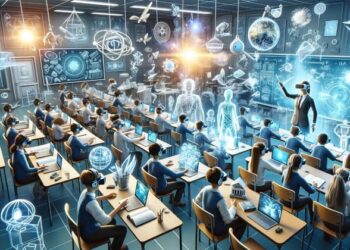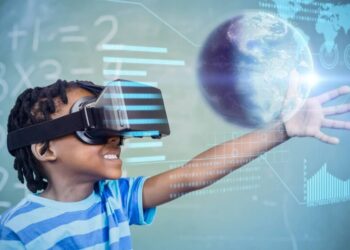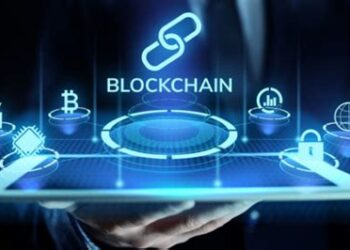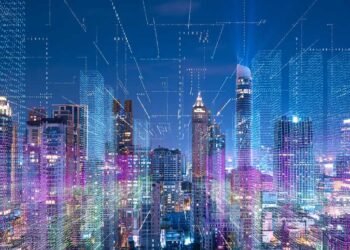The cities of the 21st century are marvels of complexity. They are intricate, living ecosystems of infrastructure, transportation, energy grids, and, most importantly, people. For the urban planners and policymakers tasked with managing and shaping their future, this complexity presents a monumental challenge. How do you predict the impact of a new subway line on traffic patterns? How can you model the effect of a heatwave on the power grid in real-time? How do you create more sustainable, resilient, and livable spaces for a growing population? For decades, the tools for these tasks—static blueprints, siloed datasets, and historical models—have been unequal to the challenge.
Enter the digital twin, a transformative technology that is moving from the realm of science fiction into the core of modern city management. This is not merely a 3D model or a detailed map; it is a dynamic, virtual replica of a city’s physical assets, processes, and systems. It is a living laboratory where the consequences of decisions can be tested and understood before a single shovel breaks ground. By bridging the physical and digital worlds with a constant flow of real-time data, urban digital twins are providing an unprecedented level of insight and foresight, fundamentally revolutionizing the field of urban planning and creating the foundation for the truly smart cities of tomorrow.
This in-depth article explores the multifaceted world of urban digital twins. We will dissect what they are, examine the powerful benefits they offer, showcase their real-world applications, and discuss the challenges that accompany their implementation. This is the blueprint for understanding the technology that will build our future cities.
Deconstructing the Concept: What is an Urban Digital Twin?
To truly grasp the power of a digital twin, it’s essential to understand what it is not. A digital twin is far more advanced than a standard 3D architectural rendering or a Geographic Information System (GIS) map. While those are static representations, a digital twin is a dynamic, evolving entity.
Imagine you have a highly detailed, photorealistic 3D model of a city district. Now, imagine that this model is connected to thousands of real-world sensors. IoT (Internet of Things) devices on traffic lights are feeding it live traffic flow data. Smart meters are streaming energy consumption information from buildings. Environmental sensors are reporting air quality and temperature in real-time. Public transport GPS trackers are showing the exact location of every bus and train.
This constant, two-way flow of data is the lifeblood of the digital twin. The virtual model reflects the exact current state of the physical district. But its power goes further: it is a simulation engine. Using this integrated data, planners can run complex “what-if” scenarios. What happens to traffic flow if we close this street for a week? How would a power outage in one area affect services in another? What is the most efficient evacuation route in case of a flood? The digital twin can simulate these events, providing data-driven answers and allowing for proactive, informed decision-making.
In essence, an urban digital twin is a virtual environment that is inextricably linked to its physical counterpart, enabling comprehensive analysis, simulation, and optimization of the entire urban ecosystem.
The Game-Changing Benefits of Digital Twin Technology
The adoption of digital twins in urban planning is not a mere technological upgrade; it’s a strategic shift that unlocks a wide array of powerful advantages. These benefits impact everything from operational efficiency to long-term sustainability and citizen well-being.
- A. Radically Enhanced and Proactive Decision-Making Planners no longer need to rely on historical data and educated guesses. With a digital twin, they can visualize the cascading effects of their decisions before implementation. For example, before approving a new high-rise development, a planning committee can simulate its impact on traffic congestion, public utility load, and even wind patterns and sun shadows on public parks. This ability to test and refine policies in a risk-free virtual world leads to better-designed, more efficient, and more livable urban spaces, saving immense costs by preventing poor decisions.
- B. Fostering Sustainability and Climate Resilience Cities are at the forefront of the battle against climate change. Digital twins are a critical weapon in this fight. By simulating energy consumption across an entire city, operators can identify inefficiencies and model the impact of renewable energy installations, like solar panels on government buildings. For climate resilience, a twin can simulate the effects of extreme weather events. By modeling a 100-year flood scenario, officials can identify vulnerable infrastructure, optimize emergency response plans, and design more effective flood defenses, ultimately protecting lives and property.
- C. Optimized Infrastructure and Asset Management Every city manages a vast portfolio of physical assets, from roads and bridges to water pipes and electrical grids. A digital twin can integrate with maintenance sensors (e.g., structural stress gauges on a bridge) to move from a reactive or scheduled maintenance model to a predictive maintenance model. The system can alert engineers to a potential failure before it happens, allowing for targeted repairs that are cheaper, less disruptive, and significantly safer than emergency interventions after a catastrophic failure.
- D. Deeper Citizen Engagement and Collaboration Urban planning has traditionally been a top-down process that can feel opaque to residents. Digital twins can democratize this process. Immersive and intuitive visualizations allow citizens to see and understand proposed changes to their neighborhood in a way that complex blueprints never could. Using Virtual Reality (VR) or Augmented Reality (AR) interfaces, residents can “walk through” a proposed park or see how a new building will look from their own window. This fosters transparency, builds public trust, and allows for more meaningful community feedback in the planning process.
- E. Driving Economic Efficiency and Development The operational efficiencies offered by a digital twin translate directly into economic benefits. Optimized traffic flow reduces fuel consumption and time lost in transit. Predictive maintenance cuts infrastructure repair costs. Streamlined construction planning reduces project delays and budget overruns. Furthermore, a city that is seen as a leader in smart technology and efficient management is more attractive to businesses and skilled workers, creating a virtuous cycle of investment and growth.
Real-World Applications: How Digital Twins are Shaping Cities Today
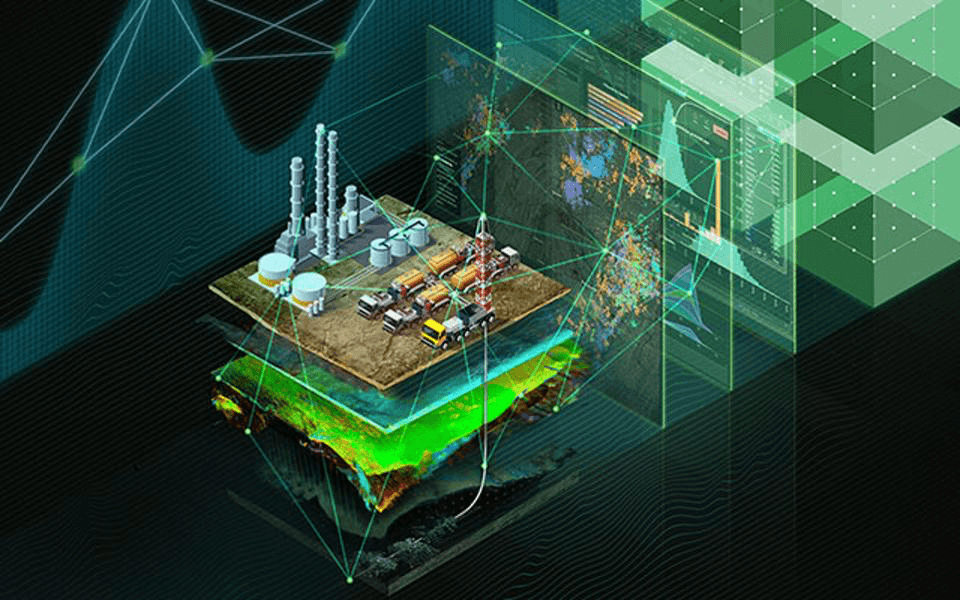
The concept of a digital twin is not purely theoretical. Cities around the world are already implementing this technology to solve complex, practical problems.
- Intelligent Traffic and Mobility Management By integrating real-time data from road sensors, traffic cameras, and public transport vehicles, a digital twin can provide a complete, live picture of a city’s mobility network. AI algorithms can then analyze this data to predict traffic jams before they form, automatically adjusting traffic light timings to ease congestion. In the event of an accident, the system can instantly calculate and suggest optimal detour routes for emergency services and the general public.
- Sustainable Building and Energy Management A digital twin can be created for a single building or an entire district. This virtual model tracks real-time energy consumption, temperature, and occupancy. The system can then automatically adjust HVAC (heating, ventilation, and air conditioning) and lighting systems to optimize energy use without sacrificing comfort, leading to significant reductions in both carbon footprint and operational costs.
- Emergency Response and Public Safety During a crisis like a fire, an earthquake, or a public security threat, a digital twin is an invaluable tool for first responders. It can provide a real-time common operational picture for all agencies, showing the location of the incident, the status of infrastructure (e.g., gas lines, water mains), accessible routes, and the location of critical assets like hospitals and fire hydrants. They can simulate plume modeling for chemical spills or plan evacuation routes that adapt to changing conditions on the ground.
- Construction and Development Planning (4D & 5D BIM) When a digital twin is integrated with Building Information Modeling (BIM), it adds the dimensions of time (4D) and cost (5D). This allows construction managers to visualize the entire construction sequence over time, identifying potential conflicts and optimizing schedules. By linking the model to cost data, they can track the budget in real-time, creating a more predictable and efficient construction process from start to finish.
The Roadblocks: Challenges and Considerations for Implementation

Despite its immense potential, the path to implementing a fully functional urban digital twin is complex and fraught with challenges that city leaders must navigate carefully.
- A. Data Privacy and Security Concerns A digital twin runs on vast amounts of data, some of which can be highly sensitive. Data from traffic sensors, smart meters, and security cameras can reveal patterns of life for individuals. It is absolutely critical to implement robust cybersecurity measures to protect the system from attack and to establish clear, transparent data governance policies that protect citizen privacy and build public trust.
- B. High Initial Investment and Technical Complexity Building a comprehensive digital twin is a significant undertaking. It requires substantial investment in IoT sensor networks, powerful computing infrastructure, sophisticated software platforms, and the integration of countless legacy data systems. The technical complexity is enormous, and cities must commit to a long-term strategic vision to justify the initial outlay.
- C. The Challenge of Data Standardization and Interoperability A city’s data is often fragmented across dozens of different departments, each using different formats and systems that don’t talk to each other. The transportation department, the water utility, and the planning office may all have their own siloed datasets. A successful digital twin requires breaking down these silos and establishing common data standards (interoperability) so that information can be shared and integrated seamlessly.
- D. The Need for a Skilled Workforce Designing, building, and operating an urban digital twin requires a new blend of skills. Cities need data scientists, IoT specialists, simulation modelers, and urban planners who are comfortable working with complex digital tools. There is a global shortage of this talent, and cities must invest in training and recruitment to build the human capacity needed to leverage this technology effectively.
The Future Horizon: What’s Next for Urban Digital Twins?
The evolution of the digital twin is just beginning. As technology continues to advance, their capabilities will become even more powerful and integrated into the fabric of our cities. We can anticipate a future where digital twins are not just analytical tools but proactive, intelligent partners in city management, driven by predictive AI that can foresee problems and automate solutions. The convergence with the metaverse could lead to even more immersive and collaborative platforms for citizen engagement.
In conclusion, the digital twin represents a paradigm shift in our ability to understand, manage, and shape the urban environment. It is the ultimate tool for taming complexity, a digital crucible where a better, more sustainable, and more equitable future can be forged. For city leaders, the question is no longer if they should adopt this technology, but how they can begin the journey to building a dynamic virtual replica of their own city, laying the digital foundation for generations to come.



